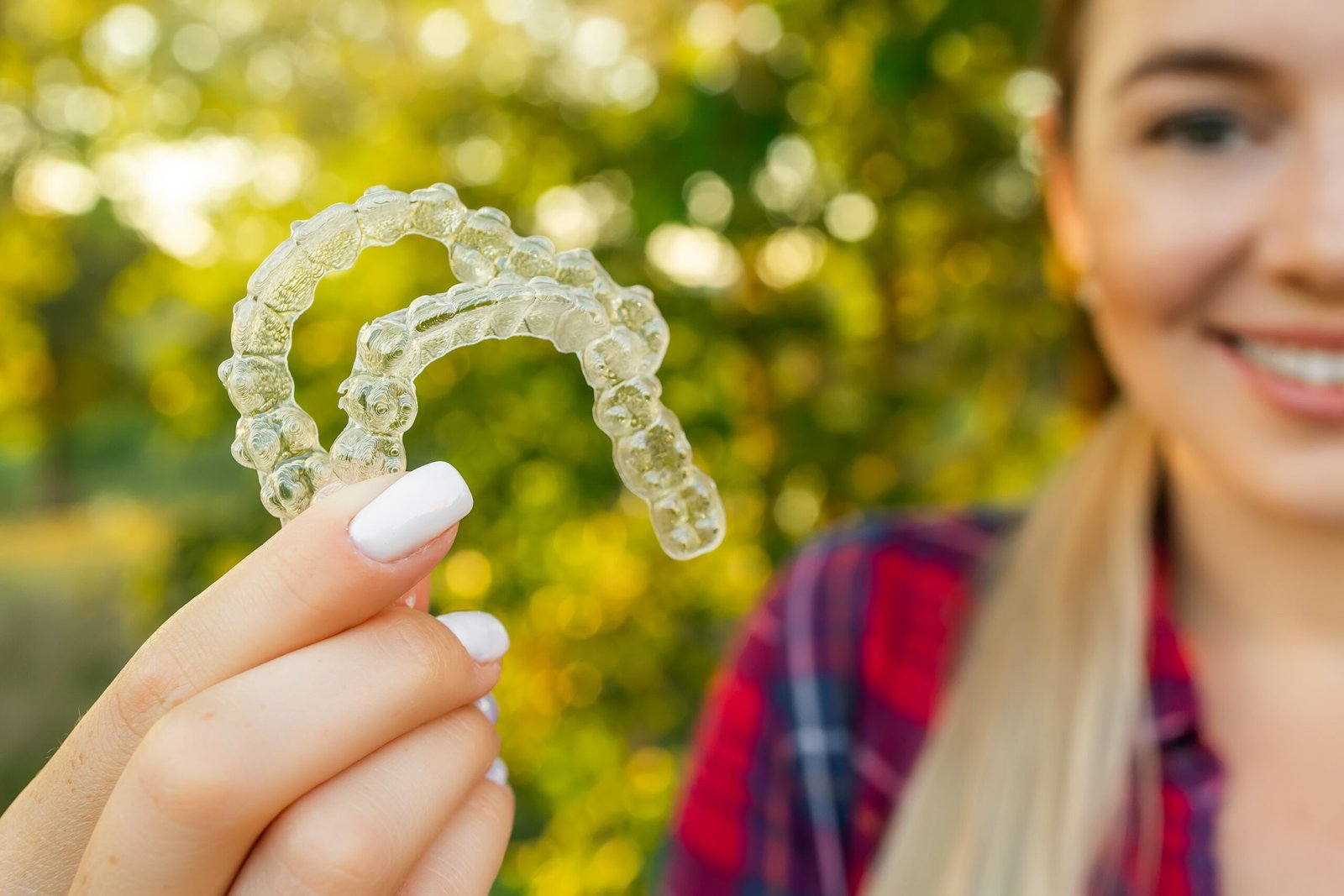Did you know your teeth are as unique as your fingerprints and just as fascinating? As we dive into the world of dental science, prepare to be amazed by intriguing and fun dental facts that will change how you think about oral health. From the surprising materials that make up your teeth to the incredible durability of enamel, there’s much more to these pearly whites than meets the eye. At Skyview Ranch Dental Clinic, led by Dr. Himani Gupta, a Top 1% Diamond+ Invisalign Provider in Calgary, we’re excited to share these lesser-known insights. Join us as we explore ten captivating teeth facts that will enlighten you and leave you smiling brighter.
Surprising Tooth Anatomy
Enamel: Strongest Substance
While bones are often considered the epitome of strength in the human body, dental enamel is the strongest substance. Composed mostly of minerals, primarily hydroxyapatite, enamel is the protective outer layer of your teeth. Despite its strength, enamel is not invincible. It can be eroded by acids from foods and drinks, as well as by plaque buildup. Once damaged, enamel cannot regenerate, which makes oral health practices like brushing and flossing crucial. It’s fascinating to think that this thin yet mighty layer withstands the daily rigors of chewing, grinding, and exposure to various temperatures. Understanding enamel’s role underscores the importance of regular dental check-ups. At Skyview Ranch Dental Clinic, we emphasize maintaining this protective barrier to ensure long-term dental health. Remember, strong enamel makes for a resilient smile, so prioritize your oral hygiene to keep it intact.
Unique Dental Prints
As fingerprints offer a distinctive identification method, your teeth possess equally unique dental prints. Each person’s teeth are a one-of-a-kind arrangement, influenced by genetics, personal habits, and even dental history. These unique patterns can be used for forensic identification, helping to solve crimes or identify individuals. Unlike most body parts, teeth are incredibly resilient to environmental factors, often surviving where other tissues do not. This resilience is why dental records play a crucial role in forensic science. Even the alignment and wear patterns are different for everyone, adding another layer of individuality. At Skyview Ranch Dental Clinic, recognizing the uniqueness of each patient’s dental anatomy helps us provide personalized care, whether for Invisalign treatment or routine check-ups. Embracing the individuality of your dental prints enhances our understanding of oral health, driving us to tailor treatments for optimal outcomes.
Teeth: Not Bones
Contrary to popular belief, teeth are not bones. Though both are hard, calcified structures, their compositions and functions differ significantly. Bones are living tissues that can regenerate and repair themselves, whereas teeth cannot. Teeth comprise multiple layers, including enamel, dentin, and pulp. Enamel, the hardest substance in the body, covers the outer layer, while dentin lies beneath it, providing additional support. The innermost part, the pulp, contains nerves and blood vessels. This complex structure makes teeth more specialized than bones, designed specifically for breaking down food and aiding digestion.
Additionally, teeth do not produce bone marrow as bones do. Understanding this difference highlights the importance of diligent dental care. Regular visits to Skyview Ranch Dental Clinic ensure that your teeth remain strong and healthy despite their inability to self-repair. By recognizing that teeth are unique entities, we can better appreciate the specialized care they require.
Amazing Oral Health Facts
Ancient Toothbrushes
Before modern toothbrushes became commonplace, ancient civilizations employed various ingenious methods to maintain oral hygiene. The earliest toothbrushes date back to 3500-3000 B.C. in ancient Babylonia and Egypt, where people used frayed twigs known as “chew sticks” to clean their teeth. These twigs were chewed on one end until the fibers separated, creating a brush-like tool. In China, around 1600 B.C., people used aromatic tree twigs to freshen their breath while cleaning their teeth. By the 15th century, the Chinese had invented the first bristle toothbrush, using boar hair attached to bamboo or bone handles. These early innovations laid the groundwork for the dental tools we use today. At Skyview Ranch Dental Clinic, we appreciate these historical strides in oral health, recognizing how far we’ve progressed in dental care. Understanding these ancient practices underscores the importance of maintaining our daily oral hygiene routines with today’s advanced tools.
Inherited Dental Traits
Your habits do not solely shape your dental characteristics; genetics also play a significant role. Traits such as tooth size, shape, and even susceptibility to cavities can be inherited from your parents. For instance, if your parents had crowded teeth or required orthodontic treatment, there’s a chance you might need similar care. Even the likelihood of developing certain oral health conditions, like gum disease, can be influenced by your genetic makeup. However, while genetics set the stage, your oral hygiene practices determine the outcome. Regular check-ups and diligent care can mitigate many inherited predispositions. At Skyview Ranch Dental Clinic, we understand the importance of considering family dental history when creating personalized treatment plans. Whether you’re exploring Invisalign options or routine cleanings, acknowledging your inherited dental traits helps us provide the most effective, tailored care. Embrace your unique dental lineage and maintain vigilant oral health practices to ensure a lasting, healthy smile.
Saliva’s Superpowers
Often overlooked, saliva is a crucial component of oral health, with remarkable properties that benefit your mouth. It acts as a natural defense mechanism, continuously washing away food particles and bacteria that can lead to plaque and cavities. Saliva contains enzymes and antibodies that help break down food and fight against harmful pathogens, maintaining a balanced oral environment. It also neutralizes acids produced by bacteria, protecting your teeth from erosion and decay. Moreover, saliva aids in the initial stages of digestion and enhances your ability to taste. Ensuring adequate saliva production is essential for maintaining oral health, which can be compromised by dehydration or certain medications. At Skyview Ranch Dental Clinic, we emphasize the importance of staying hydrated and recognizing changes in saliva flow, as these can indicate underlying health issues. By appreciating saliva’s superpowers, you can take proactive steps to support this vital aspect of your oral health.
Fun Dental Trivia
Animal Teeth Oddities
The animal kingdom is full of fascinating dental oddities highlighting the diversity of nature’s adaptations. For example, did you know sharks can have up to 50,000 teeth in their lifetime? They shed and regrow teeth continuously, ensuring they always have sharp tools for hunting. Elephants, conversely, have molars that can weigh up to 10 pounds each and are replaced six times throughout their lives. Narwhals, the “unicorns of the sea,” possess a single elongated tooth that can grow up to 10 feet long and is used for sensing environmental changes. Rodents, including beavers and rats, have teeth that never stop growing, requiring constant gnawing to keep them at manageable lengths. These unique dental traits showcase how animals have evolved to meet their dietary needs and environmental challenges. At Skyview Ranch Dental Clinic, we love sharing these fun dental trivia facts to spark curiosity and appreciation for the wonders of oral biology.
Teeth in Popular Culture
Teeth have long held a place in popular culture, often symbolizing much more than oral health. They can represent beauty, power, or even fear, influencing various art, literature, and entertainment aspects. The Tooth Fairy is a beloved figure in fairy tales, rewarding children for losing their baby teeth. This tradition reflects cultural values around growth and childhood milestones. In horror genres, sharp, exaggerated teeth are frequently used to signify danger or villainy, as seen in classic vampire lore. On the lighter side, iconic smiles in Hollywood, such as those of Julia Roberts or Tom Cruise, emphasize how teeth contribute to public personas and charisma. Even in music, songs like “All I Want for Christmas Is My Two Front Teeth” showcase how teeth are integrated into cultural expressions and humor. At Skyview Ranch Dental Clinic, we appreciate how teeth’s role in culture underscores their importance beyond mere function, enriching human narratives and experiences.
Dental Records in History
Dental records have played a pivotal role throughout history in identifying individuals, particularly when other methods are not feasible. One of the most famous early uses of dental records was in 1776, when Paul Revere, a silversmith and dentist, identified the body of Dr. Joseph Warren using a dental bridge he had crafted. This marked the first known case of post-mortem dental identification. As forensic science developed, dental records became essential in solving crimes and identifying victims of disasters. They are valued for their durability, as teeth can withstand decay and environmental conditions that often destroy other identification methods. Today, dental records include detailed charts, x-rays, and digital imagery, providing comprehensive data for forensic teams. At Skyview Ranch Dental Clinic, we maintain accurate dental records to ensure continuity of care and contribute to broader societal needs. The historical significance of dental records highlights their enduring importance in both personal and public spheres.
Conclusion
Understanding your teeth’ unique and fascinating aspects can transform how you approach oral health. From the extraordinary strength of enamel to the rich history of ancient toothbrushes, every fact enhances our appreciation for these crucial components of our bodies. At Skyview Ranch Dental Clinic, our goal is to provide you with exceptional care tailored to your specific dental needs, informed by the unique characteristics of your teeth. Embrace the knowledge of these intriguing dental facts and prioritize your oral hygiene for a healthy, resilient smile.
For more information, reach out to us at Dr Himani Gupta at Skyview Ranch Dental Clinic, 1117-55 Skyview Ranch Rd NE Calgary, AB T3N 0E4, 403-266-1212
We also serve Airdrie, Cochrane, Okotoks, Black Diamond, Crossfield, Irricana, Strathmore, High River, Carstairs, Didsbury, Nanton, Olds, Vulcan, Three Hills, and Sundre, Canada.
Key Takeaways
- Enamel Strength: Dental enamel is the strongest substance in the human body. It is primarily composed of hydroxyapatite and plays a crucial role in protecting teeth from daily wear and tear.
- Unique Dental Prints: Each person’s teeth are as unique as fingerprints, with distinctive patterns that can be used for forensic identification.
- Teeth Are Not Bones: Unlike bones, teeth cannot regenerate or repair themselves; they consist of multiple layers, including enamel, dentin, and pulp, each serving a specialized function.
- Ancient Oral Hygiene: Ancient civilizations used innovative tools such as “chew sticks” and early bristle toothbrushes to maintain oral hygiene long before modern dental care.
- Inherited Dental Traits: Genetics significantly influence dental characteristics like tooth size, shape, and susceptibility to cavities, underscoring the importance of personalized dental care and regular check-ups.
FAQs
- Why is enamel so important for dental health?
- Enamel is the hardest substance in your body, protecting your teeth from decay and physical damage. Once enamel is damaged, it cannot regenerate, making it essential to maintain through good oral hygiene practices.
- How are dental records used in forensic science?
- Dental records, including charts, x-rays, and digital imagery, provide unique identifiers that can withstand environmental conditions, making them invaluable for identifying individuals in forensic investigations.
- Are my teeth unique compared to others?
- Yes, your teeth have unique characteristics, much like fingerprints. Genetics, personal habits, and dental history influence these unique dental prints.
- Why can’t teeth repair themselves like bones do?
- Unlike bones, teeth do not have living tissues capable of regeneration. Teeth comprise enamel, dentin, and pulp, each with specialized functions that do not include self-repair.
- How did ancient civilizations clean their teeth?
- Ancient civilizations used tools like frayed twigs known as “chew sticks” and early bristle toothbrushes made from boar hair to clean their teeth and maintain oral hygiene. These tools laid the foundation for modern dental care instruments.
___________________________________________________________________
Dr. Himani Gupta, a dentist since 2011 and an experienced dentist from India, graduated from Dalhousie Dental University in Halifax. Now practicing in Calgary, she’s pursuing advanced education at the American Academy of Clear Aligners. She is an active member of AACA and the American Academy of Clear Aligners, and she continuously upgrades her knowledge and training through advanced continuing education courses. She also has comprehensive braces training through the Academy of General Practitioners of Orthodontics. She emphasizes patient education to foster trust and confidence. Her passion for cosmetic dentistry drives her to stay updated on the latest advancements in the field. Dr. Himani Gupta is a Top 1% Diamond+ Invisalign provider in Calgary.





